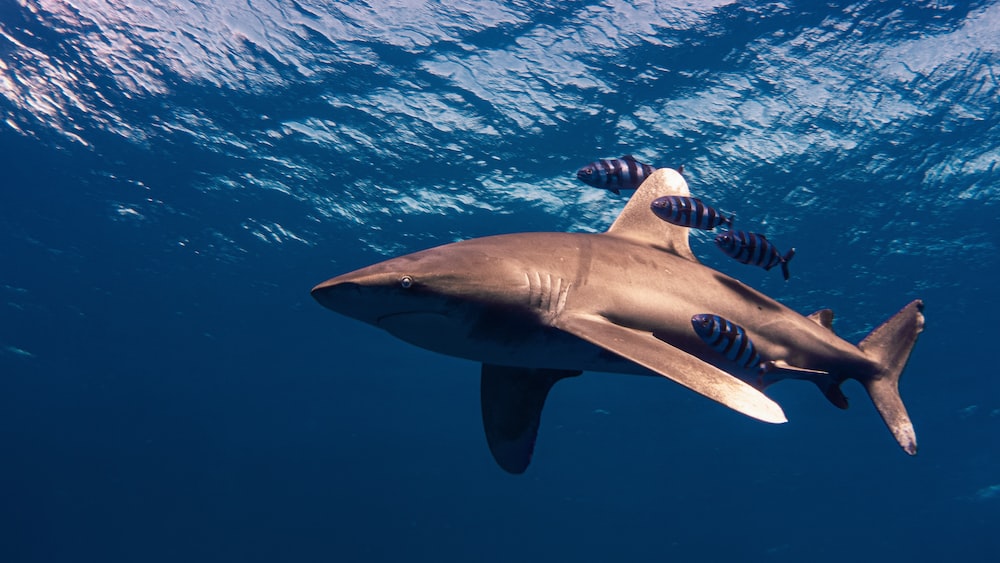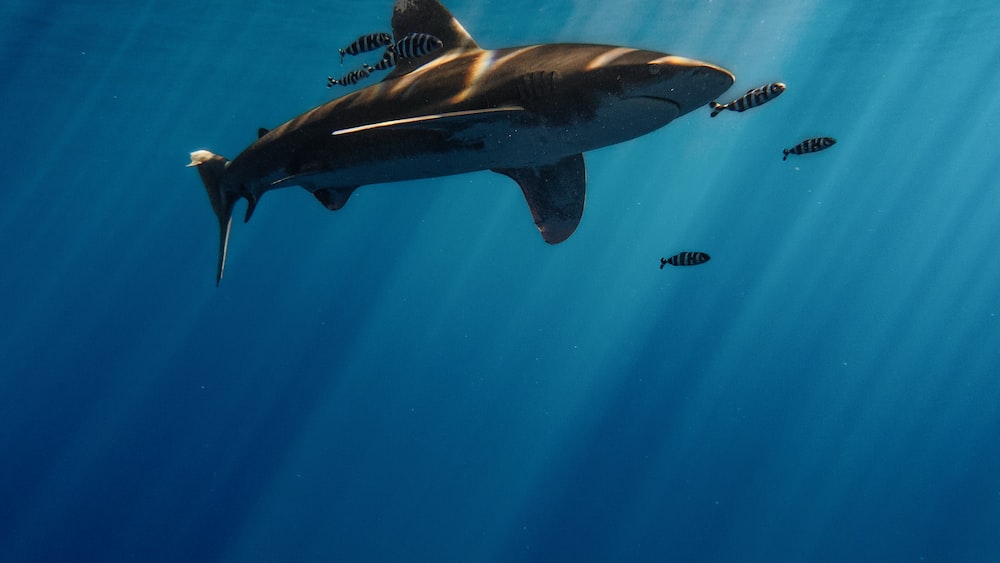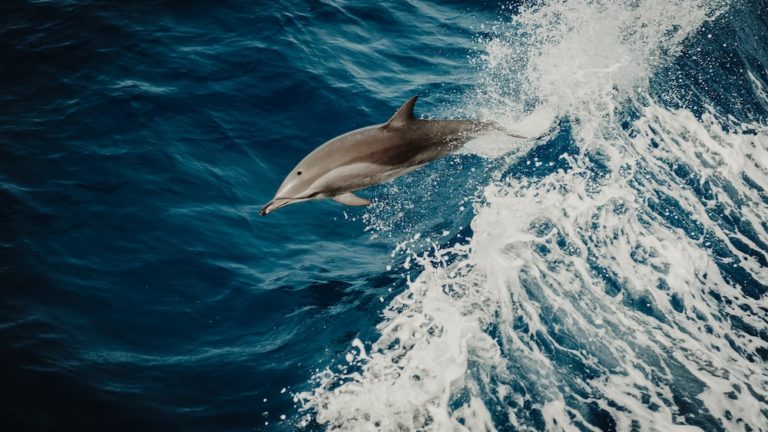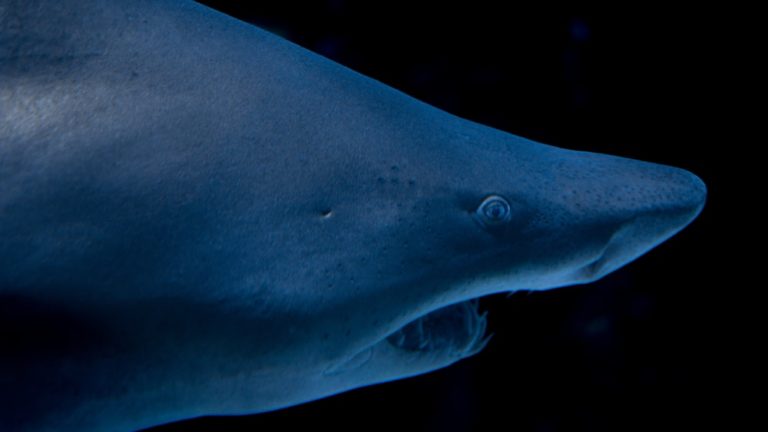Discovering How Many Babies Do Sharks Have
Discovering How Many Babies Do Sharks Have
Did you ever wonder, how many babies do sharks have? If the thought has ever swum across your mind while watching these magnificent creatures gliding through the deep blue, you’re not alone. Enthusiasts, conservationists, and the simply curious have pondered over what happens in the mysterious ocean nurseries for ages.
Key Points:
- Sharks have diverse reproductive methods including oviparity, viviparity, and ovoviviparity.
- Factors like size, age, health, and environmental conditions influence how many babies sharks have.
- Shark nursery grounds play a vital role in the survival of young sharks and some species demonstrate natal philopatry.
- Different shark species have varying litter sizes and gestation periods, with the blue shark having the highest number of babies.
- Human activities, including overfishing, pollution, and climate change, impact shark birth rates and survival.
- Understanding shark reproduction is crucial for conservation efforts and implementing specialized strategies is important for each species.
Sharks are often portrayed as solitary predators, but when it comes to their offspring, there’s much more than meets the eye. From the scintillating surfaces to the abyssal depths, their reproductive habits are as varied as the environments they inhabit. Let’s embark on an exploratory dive into the fascinating world of shark reproduction.
Whether you’re a seasoned marine life fan or an eco-adventurer hoping to conserve these stunning species, there’s no denying the allure of sharks. Their survival depends heavily on their ability to reproduce successfully, making understanding their life cycle crucial. As we unravel the enigmas of their reproductive strategies, prepare to be captivated by the rich tapestry that is shark birth and development.
The Reproductive Diversity of Sharks
The term ‘shark’ encompasses a vast array of species, each with its unique approach to reproduction. Teeming with life, the oceans offer a backdrop to a compelling reproductive narrative that’s as diverse as the shark species themselves. In the underwater world of sharks, the number, survival, and development of offspring vary greatly, painting a complex picture of their continuance.
Understanding Shark Reproduction Methods
Shark reproduction methods can be categorized into three significant types: oviparity, viviparity, and ovoviviparity. Oviparous sharks, the egg-layers among them, release eggs into the water, leaving embryos to develop outside the mother’s body. Think of it as a nursery in the open ocean, where sharks’ begin life encased in a protective egg capsule, commonly known as a mermaid’s purse.
Viviparous sharks, on the other hand, give birth to live pups. These species tend to have fewer offspring, but they give their young a head start on survival with nourishment from the mother’s womb. Among them, ovoviviparous species strike a balance; these sharks carry the eggs internally, and pups are born live after hatching within the mother. Each method showcases a unique evolutionary adaptation to ensure the continuation of the species.
Shark reproduction methods include oviparity, viviparity, and ovoviviparity, each showcasing unique evolutionary adaptations for species continuation.
Factors Influencing Shark Fecundity
Several key factors influence how many babies do sharks have, with fecundity varying widely amongst different shark species. These factors include the shark’s size, age, and health, as well as environmental conditions. Larger shark species typically have more resources to develop more offspring, while the ripe age of the mother can also yield a larger brood.
Human activities and ecological changes weigh heavily on shark birth rates. Overfishing and habitat destruction can hinder reproduction by reducing available mates and suitable nursery areas. Understanding these factors is fundamental to crafting effective conservation strategies, ensuring shark populations can thrive for generations to come.
The Life Cycle of Sharks
The life cycle of sharks is a tale of resilience and wonder, unfolding across oceanic stage. From the birth of pups to the maturity of apex predators, each stage of their life is instrumental in maintaining the balance of marine ecosystems. Knowing about these developmental stages is pivotal for those eager to protect our oceanic counterparts.
From Embryo to Pup: The Development Stages
The journey from embryo to pup is a precarious path laden with survival challenges. Initially, the embryo is solely reliant on the yolk sac, a packed lunch provided by the mother filled with necessary nutrients. As the embryo grows, it absorbs this yolk until it’s ready to burst forth into the ocean as a fully formed pup.
The transformation within the egg capsule or womb is remarkable – tiny sharks evolve from vulnerable embryos to independent pups, equipped with instinctual behaviors for hunting and avoidance of predators. Depending on the species, the number of pups can range from a single offspring to hundreds, each vying to carve out their niche in the vast ocean.
Nursery Grounds: The Cradle of Shark Infancy
Shark nursery grounds are akin to the underwater version of a protected playpen, where young sharks can grow with reduced threats from predators. These areas are typically rich in food sources and offer plentiful hiding spots where pups can hone their hunting skills. They also serve as a strategic stronghold against the dangers of the ocean until the sharks are formidable enough to venture into the open sea.
Certain species of sharks demonstrate natal philopatry, with females returning to their birthplace to give birth. This remarkable behavior ensures that the nursery grounds are continually replenished, securing a future for the next generation of sharks. These nurseries are indeed the cradle of shark infancy, vital for the survival of these species.
Shark nursery grounds provide a protected environment for young sharks to grow, learn hunting skills, and ensure the future generation’s survival.
Species-Specific Birth Rates
The nuances of how many babies do sharks have can only be understood by delving into species-specific details. Each shark species adapts its reproductive strategy to optimize survival in its distinct habitat, resulting in curious variations in birth rates. The often hidden lives of sharks beneath the waves come to light with intriguing revelations about their propagation.
Egg-Laying Sharks: Oviparity in Action
Among the shark species, there are those who prefer to tuck their future away in the form of eggs. Oviparous sharks, such as the horned shark, lay eggs which they cleverly disguise or anchor to the seafloor, taking full advantage of the camouflage provided by the ocean’s terrain. The eggs, encapsulated in tough leathery cases, shield the developing embryos from the harshness of their predators and the environment.
Inside these purses, the embryos engage in a silent dance – a prelude to their entrance into the underwater realm. The emergence of pups from these eggs is indeed a marvel to behold, a first breath that’s been months in the making. The number of eggs laid can be plentiful, a biological bet against harsh predation awaiting the shark species in the outside world.
Live-Bearing Sharks: Viviparity and Ovoviviparity
For live-bearing sharks, pregnancy culminates in the birth of live pups, a spectacle as mesmerizing as it is important for these species’ continuity. Viviparous species, such as the blue shark, nurture their developing embryos via a placenta, assuring them a rich supply of nutrients. The investment in each embryo is significant, often resulting in a smaller litter of pups but with a higher chance of survival.
Ovoviviparous sharks, on the other hand, including the famous great white, carry eggs that hatch inside the mother. The embryos may receive additional nourishment through unfertilized egg capsules provided by the mother in what’s known as oophagy, or in more macabre scenarios, some species exhibit adelphophagy, where stronger embryos consume their weaker siblings. These diverse reproductive strategies highlight the adaptability of shark species, ensuring their dominance in the oceanic food chain.

The Extremes of Shark Births
When we probe the extremes, we discover the astonishing range of how many babies do sharks have. The reproductive capacity of each shark species can shed light on their resilience and vulnerability. Understanding these extremes is not just an academic pursuit; it’s essential for the conservation of these vital ocean predators.
Record-Holders: Sharks with the Most and Least Offspring
Dive into the extremes of shark reproduction, and you’ll find that not all sharks are prolific breeders. At one end of the spectrum, the spiny dogfish shark holds the title for its lengthy pregnancies, with females sometimes carrying a brood for almost two years. However, this marathon of motherhood doesn’t necessarily translate to large numbers of offspring. Typically, a female spiny dogfish will have a modest litter of two to eleven pups.
Then there’s the blue shark, often seen as the Michael Phelps of shark reproduction, gliding through the records with litters that can number up to a staggering 135 pups! These prolific females might give their own unique meaning to the phrase “a sea full of half-siblings.” While blue sharks lead the pack, it’s clear that when answering how many babies do sharks have, the response is as broad as the ocean itself.
Shark reproduction varies widely, with some species having lengthy pregnancies and modest litters, while others, like the blue shark, can give birth to up to 135 pups.
Gestation Periods: The Long Wait
For expectant shark mothers, the gestation period can feel like an underwater odyssey. Great white sharks, apex predators of the sea, may carry their young for 11 months, a gestation period that rivals some of the longer human pregnancies. Remarkably, the aforementioned spiny dogfish can extend that up to 24 months, the longest of any known shark species. Such durations represent a significant investment in future generations for these cartilaginous fish.
But it isn’t just the time commitment that’s notable. It’s the survival strategy wrapped within it. By warding off predators and navigating the currents, females protect their developing pups for the entirety of these lengthy gestations, ensuring the newborns have the best shot at survival amidst the perils of oceanic life. In some shark species, embryos grow equipped with teeth, ready to take on their world from the moment they’re born.
Gestation periods can also fluctuate based on external factors like water temperature and availability of food. This versatility in timing may help sharks adapt to ever-changing marine environments, a slow-motion dance of nature’s design that ensures their lineage continues against the backdrop of an aquatic world in flux.
The Impact of Reproduction on Shark Populations
In the grand narrative of the ocean, the way sharks reproduce can dramatically shape their populations. Reproductive habits, including gestation periods and litter sizes, are the cornerstone of maintaining shark numbers but also their Achilles’ heel. Long gestation periods and small litter sizes mean that many shark populations cannot rebound quickly if depleted, making them especially vulnerable to the impacts of overfishing and habitat loss.
The Role of Reproduction in Shark Conservation
- Understanding shark reproduction is salient to their conservation.
- Females of many shark species do not reach sexual maturity until they are several years old, and even then, they may only reproduce every other year or less frequently.
- This slow burn of the reproductive process is why protection during the vulnerable stages of pregnancy and infancy becomes a compelling chapter in the saga of saving our finsome friends.
Litter size, frequency of reproduction, and the survival of young all weave into the complex tapestry of shark conservation efforts. Over the years, researchers have gleaned that preserving nursery grounds and implementing fishing quotas can be effective in giving shark populations a fighting chance.
With each species dancing to the beat of its own reproductive drum, specialized conservation strategies become paramount. For instance, while safeguarding the habitats of egg-laying sharks can ensure more pups reach adulthood, implementing protective measures for migratory great white sharks during their breeding season can help maintain stable population numbers. In essence, knowing how many babies sharks have is merely the beginning of the journey to their preservation.
Understanding the intricacies of shark reproduction is vital for their conservation, as it involves various factors such as litter size, frequency of reproduction, and the survival of young, which all contribute to the complex tapestry of shark conservation efforts.
Human Impacts on Shark Birth Rates and Survival
Human activities wield considerable influence over the marine theatre in which sharks play out their lives. Overfishing can drastically reduce the number of males joining the mating waltz, skewing the delicate balance of shark social structures. Pollution, particularly in the form of chemical runoff and plastic waste, infiltrates the nurseries of shark infancy, turning these once safe havens into gauntlets of survival.
Climate change tosses another trident into the workings of oceanic life, as rising temperatures and acidifying waters alter the very fabric of shark existence. Such changes can lead to shifts in prey availability, forcing females to adapt their reproductive behaviors or face dwindling birth rates.
It’s imperative, now more than ever, to align our human narratives with those of our shark counterparts. Through sustainable fisheries, protected ocean zones, and an insatiable curiosity to understand – really understand – the life that thrums beneath the waves, we can work towards a future where every pregnancy and pup counts in the ledger of marine survival.
FAQs
1. What shark species has the highest number of babies?
The shark species with the highest number of babies is the blue shark, with litters that can swell up to 135 pups.
2. How long do sharks carry their young before giving birth?
The duration sharks carry their young before giving birth ranges greatly by species, but it can be anywhere from a few months to two years, as seen with the spiny dogfish shark.
3. Are there sharks that exhibit sibling cannibalism in the womb?
Indeed, some sharks exhibit sibling cannibalism in the womb, a ruthless survival tactic known as intrauterine cannibalism.
4. Can sharks really have a ‘virgin birth’?
It’s quite fascinating, but yes, sharks can sometimes have what’s considered a ‘virgin birth,’ an asexual reproduction method scientifically termed parthenogenesis.
Conclusion
Understanding how many babies do sharks have is akin to discovering a hidden cove treasure; it’s a fundamental piece of knowledge necessary for the conservation and appreciation of these misunderstood marine marvels. Through nurturing this knowledge, we not only become stewards of the deep but also foster a deeper connection with nature that transcends the surface.
In our journey through the wonders of shark reproduction, we have seen how the very survival of these iconic creatures hangs in the delicate balance of their ability to reproduce and flourish. As we chart our course forward in the quest for marine conservation, let us carry the torch of awareness and advocate for the sharks that have graced our oceans for millions of years.
May you always feel the pull of the ocean tides and the call of the wild waves, united by a common purpose to safeguard the sentinels of the sea. Farewell, fellow sea spirits, and until our next aquatic adventure, keep diving deep into knowledge and let curiosity be your compass. With warm regards and salty wishes,
Jasper Flynn.







